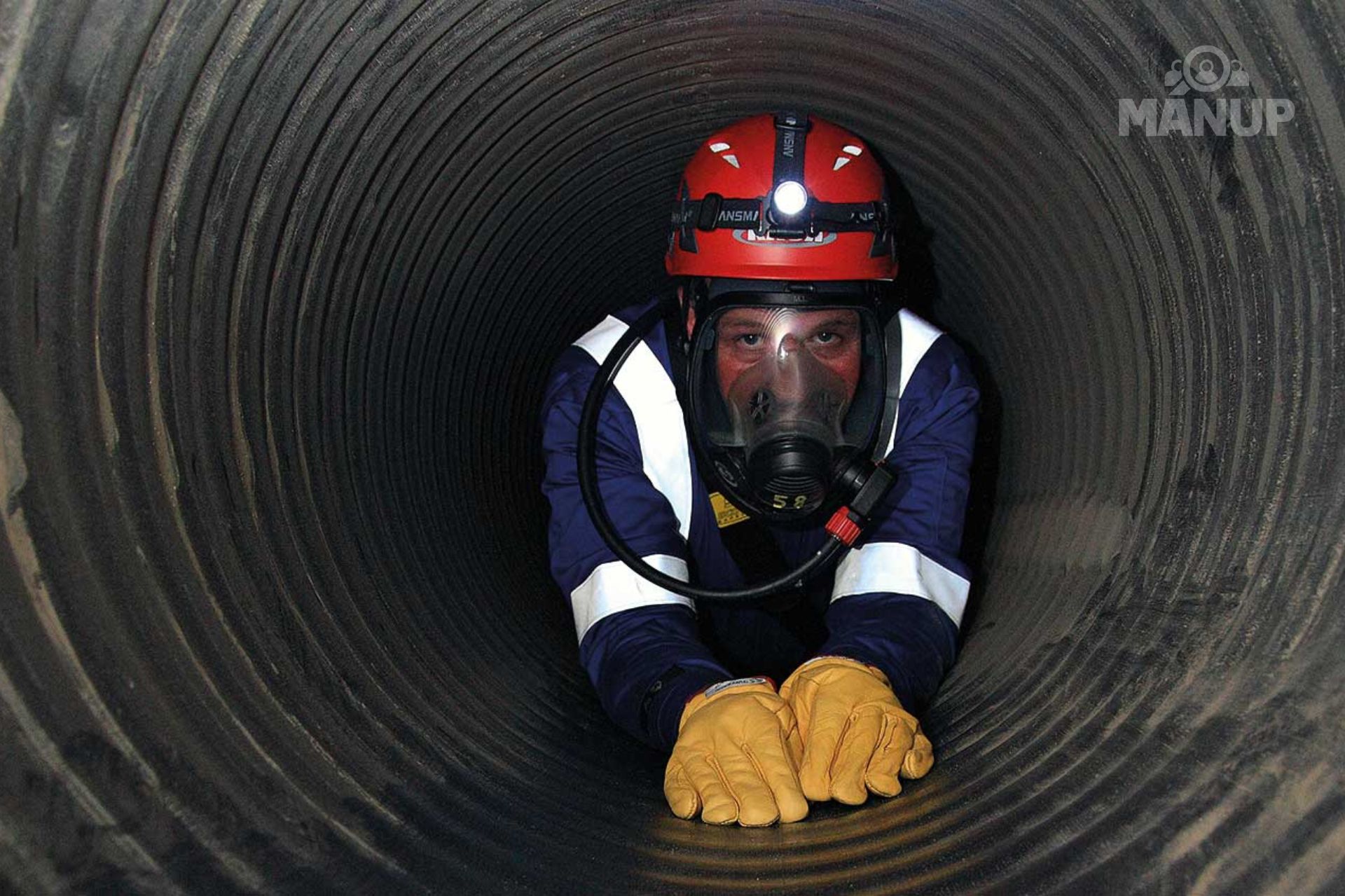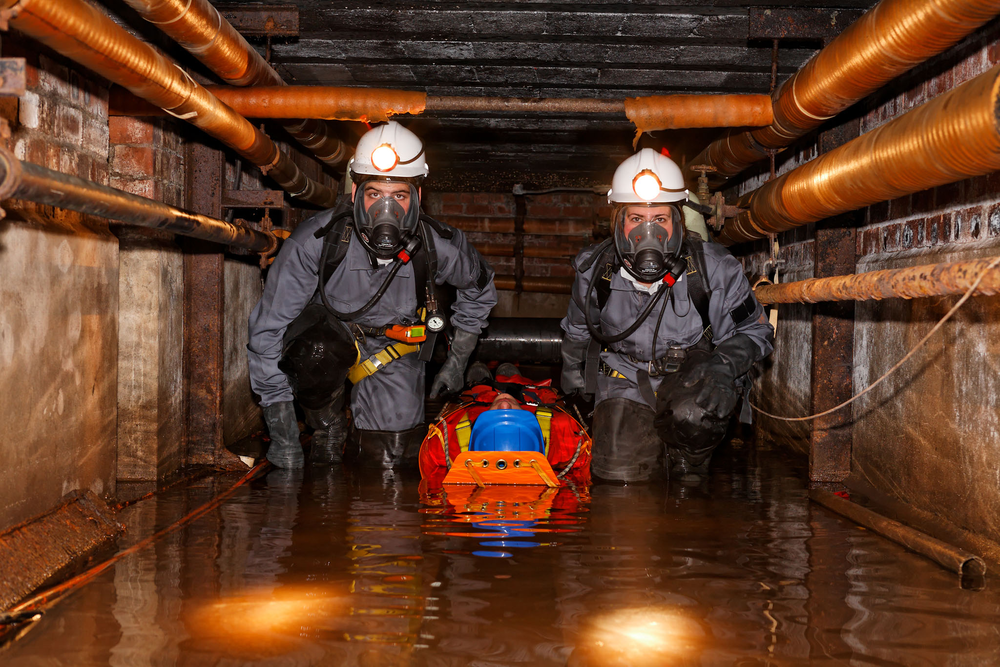
Working In Oil And Gas Confined Spaces: 7 Safety Tips
...Tomiwa Oladipo Published July 2022
Working within confined spaces in the oil and gas industry poses significant risks with grave consequences if proper precautions are not taken. According to the Bureau of Labor Statistics (BLS), on average, two employees die weekly in confined space-related accidents.
If you have to work in a silo, storage tank, reaction vessel, boiler, pit, utility vault, pumping station, vat, holding tank, pipeline, or similar structure, you’re working in a confined space.
A common misconception is thinking that any space with “one way in or out” is a confined space. But before you can classify any space a confined space, it must:
- be large enough for an employee to enter and perform assigned duties
- have limited entry and exit points
- not be designed for continuous employee occupancy.
But can I carry out operations safely in a confined space? Yes, you can. We have gathered few insights from experts on how to work safely in a confined space. Keep reading to learn about these.
The Danger of Working in Confined Spaces
Generally, not all confined spaces are deadly. The U.S. Occupational Health and Safety Administration (OSHA) classified confined spaces into non-permit and permit-required confined spaces.
Non-permit confined spaces do not contain any hazard capable of causing severe physical harm or death, while permit-required confined spaces have controlled risks. Usually, permit-required confined spaces are IDLH (immediately dangerous to life and health).
According to the U.S. Bureau of Labor Statistics, 1,030 workers died from occupational injuries while working in confined spaces between 2011 and 2018.
Although the actual causes of fatalities vary, the common reasons include inhalation of harmful gases, such as carbon monoxide, hydrogen sulfide, solvents, methane, sewer gas, etc.
Other causes of fatalities include engulfment of other collapsing materials, drowning, direct exposure to electricity and environmental heat, and oxygen depletion.
It’s also worthy of note that approximately 60 percent of confined space fatalities happened to be “would-be” rescuers.
Permit-Required Confined Spaces
The U.S. Occupational Health and Safety Administration (OSHA) classified high-level risk confined spaces as “permit-required” confined spaces.
According to OSHA, permit-required confined spaces have the following characteristics:
- Contains hazardous or potentially hazardous atmosphere
- It includes materials that can engulf an entrant
- It has converging walls
- It has other recognized severe health hazards, such as exposed live wires.
Hazards to look out for
The main hazard of a confined space is the gas contained within it, which might be hydrogen sulfide, carbon monoxide, and methane gas that could result in asphyxiation or oxygen deficiency.
Other common confined space hazards include exposed live wires, heat stress, and unguarded machinery.
How to Minimize Risks in Confined Spaces
Here are quick safety tips:
1. Entry and exit plan
Confined spaces have limited entry and exit points. Ensure you consider their size and choose appropriate equipment that allows the personnel to fit in easily. Also, ensure the exit point supports emergency evacuation before you proceed.
Ensure you follow and understand the appropriate procedures before entering the confined space.
2. Use trained personnel
Confined spaces have zero tolerance for mistakes. Any negligence on your worker’s part could have grave consequences. Sometimes, oversights happen when your workers don’t know the rules. That’s why you must rehearse all safety tips in line with the condition of the space before entry.
3. Monitor the atmosphere before and during entry
OSHA demands that you test the confined space conditions to know if it’s safe for entry or not. Knowing the flammability, oxygen content, toxicity, and presence, or otherwise, of any explosive hazards will help choose the appropriate safety equipment and mitigation plans. Sometimes, the knowledge of confined space atmospheric conditions could mean the difference between life and death.
Also, the ambient conditions within the confined space can change quickly depending on the activity being performed e.g during welding. Proper hazard mitigation techniques recommend conducting periodic tests of the atmospheric conditions within the confined space. It's best to work with an automatic alarm system to warn the personnel inside and those outside the confined space where necessary.
4. Verify the space hazards before and during entry
Depending on the design and purpose, confined spaces have varying hazards.
Before authorized entry, ensure you:
- Identify physical hazards
- Remove engulfment hazards
- Double block and bleed lines that run into the space
- Lockout energy hazards
- Ventilate the confined space
Also, ensure the type of operation your workers will perform in the confined space will not create an unsafe environment. For instance, welding materials produce carbon monoxide and can cause an explosion in oxygen-enriched environments.
5. Check safety equipment
Safety is paramount when working in confined spaces. Ensure you inspect the rescue, air-monitoring, lighting, ventilation, communication, and fall protection equipment following entry procedures.
6. Have a fail-proof rescue plan
Ensure you have an automated retrieval system used for non-entry rescue of persons from confined spaces on standby. Also, ensure you keep your rescue team updated on the hazards of the confined space.
7. Maintain communication
Ensure you maintain visual (where possible) and oral communication with a trained attendant and report any inconsistencies immediately. Communication equipment must support the confined space's working conditions, such as depth and moisture.
This monitoring system helps the entry supervisor to order evacuation and alert trained rescue personnel when necessary.
To Sum Up
Manup, in alliance with some of the industry's globally recognized providers, offers training, competence development, and compliance assurance to users of our platform. Our clients, including those at the forefront of the energy transition, operate in safety-critical environments to deliver projects and ongoing operations using the highest safety and technical standards.
Let us help with staffing, training, technology, and professional services while you focus on what you do best. Join Manup as a Worker or Hire Pre-vetted Workers from Manup now!

